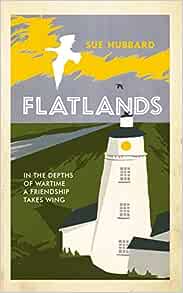Philip and Freda are outsiders, one by his choice of pacifism and the other by her circumstances, who struggle to survive as WW2 breaks out in Europe.
Philip is a young man conflicted with anxieties and doubts about his relationships with Jess and her brother Peter. He struggles with making his way in the world, flunks his finals at Keble College, becomes a conscientious objector and withdraws to a disused lighthouse to endeavour to scratch a living as a farm labourer. Here he discovers ‘only two things mattered. The natural world and painting’.

Freda is a child of a family running a hardware shop in the East End of London. She is evacuated out to a family whose lives are ‘nasty, poor and brutish’ in the desolate flatlands of south Lincolnshire. Here she is neglected and faces dreadful hardship.
Freda visits Philip in the lighthouse and these two lost souls find companionship and discover a shared project – that of caring for a wounded albino goose.
But this friendship is broken when Philip overcomes his pacifist objections, steals a small boat and sails to assist the evacuation from Dunkirk.
There are two narrative voices. The first is the interior monologue of Freda as an old woman whom we gradually learn is in a care home. She is revisiting scenes from her life on a day when the residents are due to gather to watch the TV coverage of the 75th anniversary of the evacuation from Dunkirk. The second is an unnamed narrator. Plot is less important in this novel as it moves slowly between Freda’s memories as captured in the journal she has been writing. The unnamed narrator recounts scenes from Philip’s early life at home and at college. There are no distinct chapters. Instead the novel unfolds in a series of scenes which cut back and forth across the years.
Slow-moving with strong research
Sue Hubbard has written a slow-moving novel which allows it the time to dwell on period details. The research is very well done with every page bringing evocative insights into the 1930s and early 1940s. This is a great achievement as it is skilfully woven into the narratives.
The first half of the novel is exposition with dramatic events beginning to gather pace only in the second half. But having spent so much on the exposition, I wanted to know much more of Freda’s life from surviving the stress and squalor of being an unwanted evacuee to her life in a care home 75 years later. We can surmise Philip’s fate but not to offer any glimpse as to Freda’s life seems frustrating and unsatisfying. Did she make a transition from her sad lonely life as an evacuee to one that was warmer and more fulfilling?
This is a sad tale set in the middle of the 20th Century that’s distanced now so as to be a historical novel. It’s not a happy tale but it does celebrate the steadfastness of two people who struggle against grim situations to find a fulfilment of sorts.
